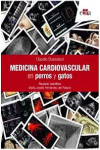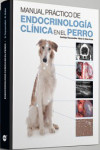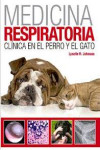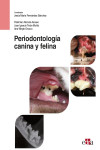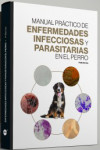PET OWNER EDUCATIONAL ATLAS: DOGS
Biomedia S.L., Grupo Asís
Datos técnicos
- Edición 2ª
- ISBN 9788418498282
- Año Edición 2021
- Páginas 92
- Encuadernación Tapa Dura
- Idioma Inglés
Sinopsis
The second edition of this educational atlas on dogs expands on its initial goal of helping veterinary surgeons communicate with owners by adding to the content of the first edition with 16 new sheets. Needless to say that the previous content has been revised and updated with the latest developments in each area.
Índice
1. Anatomy
1. The skeleton of dogs. Fibrous, cartilaginous, and synovial joints
2. The musculature of dogs
3. Abdominal and thoracic organs
4. Primary vasculature of dogs
2. Main conditions by body systems
Musculoskeletal system
5. Osteochondrosis. Shoulder and stifle joints
6. Elbow dysplasia
7. Hip dysplasia
8. Vertebral disorders. Spondyloarthropathy, hernia, and luxation
9. Avascular necrosis of the femoral head. Legg-Calve–Perthes disease
10. Anterior cruciate ligament rupture (ACLR) of the stifle joint
Urogenital system
11. Congenital disorders in dogs
12. Acute and chronic kidney disease
13. Urinary stones. Urethral obstruction
14. The oestrous cycle in female dogs
15. Male and female sterilisation
16. Most frequent canine dystocia
17. Pyometra
18. Ovarian diseases. Cysts and neoplasms
19. Vaginal hyperplasia and prolapse
20. Pseudopregnancy
21. Mammary tumours
22. Benign prostatic hyperplasia (BPH)
23. Cryptorchidism
Cardiorespiratory system
24. Dilated cardiomyopathy
25. Congenital heart defects
26. Acquired valve degeneration. Congestive heart failure (CHF)
27. Hypertension. Blood pressure measurement techniques
28. Interventional techniques
29. Acquired diseases of the larynx and trachea
30. Brachycephalic airway syndrome. Surgical treatment
31. Peritoneopericardial diaphragmatic hernia
32. Pneumothorax and pleural effusion
Endocrine system
33. Canine diabetes mellitus
34. Hyperadrenocorticism. Cushing’s syndrome
35. Hypoadrenocorticism. Addison’s disease
36. Hypothyroidism in dogs
Skin and appendages
37. Structures of a dog’s skin
38. Ectoparasites. Fleas and ticks
39. Mange
40. Fungi and yeasts
41. Hypersensitivity. Allergies
42. Canine pyoderma: impetigo and hot spots
43. Otitis externa
44. Immune-mediated and autoimmune diseases of the skin
Digestive system
45. Canine dental anatomy. Deciduous and permanent teeth
46. Periodontal disease
47. Salivary glands diseases
48. Main diseases of the oesophagus
49. Gastric dilatation–volvulus syndrome
50. Gastrointestinal foreign bodies
51. Common intestinal parasites
52. Pancreatitis and exocrine pancreatic insufficiency
53. Hepatitis
54. Portosystemic shunts
55. Perianal conditions
56. Food intolerances and different nutritional modalities
Eyes
57. Structures of the eye
58. Keratoconjunctivitis sicca (KCS)
59. Corneal ulcers
60. Lens degeneration. Cataracts
61. Eyelid and eyelash disorders
Nervous system
62. Central, peripheral, and autonomic nervous systems
63. Cognitive dysfunction syndrome (CDS)
64. Peripheral and central vestibular syndromes
65. Convulsions: epilepsy
Haematopoietic system and oncology
66. Anaemic dogs – regenerative and nonregenerative anaemia
67. Canine lymphosarcoma
68. Canine mast cell tumours
69. Canine haemangiosarcoma
3. Communicable diseases
70. Canine leishmaniasis: the mosquito disease
71. Canine dirofilariasis. Heartworm disease
72. Tick-borne communicable diseases. Babesiosis, ehrlichiosis, and borreliosis
73. Canine parvovirus
74. Canine distemper
75. Leptospirosis
76. Kennel cough. Infectious tracheobronchitis
77. Rabies
78. Vaccinations in puppies and adult dogs
79. COVID-19 infection in dogs and their epidemiological role
4. Special techniques
80. Cutting nails
81. Problems caused by plant awns. Removal using alligator forceps
82. How to administer medications
5. Behaviour and handling
83. Reproductive behaviour
84. Common postures in dogs
85. Management and care of newborns
Otros libros que te pueden interesar
- ¿Quiénes somos?
- Gastos de envío
- Política de privacidad
- Políticas de devolución y anulación
- Condiciones Generales de contratación
- Contacto
2025 © Vuestros Libros Siglo XXI | Desarrollo Web Factor Ideas






